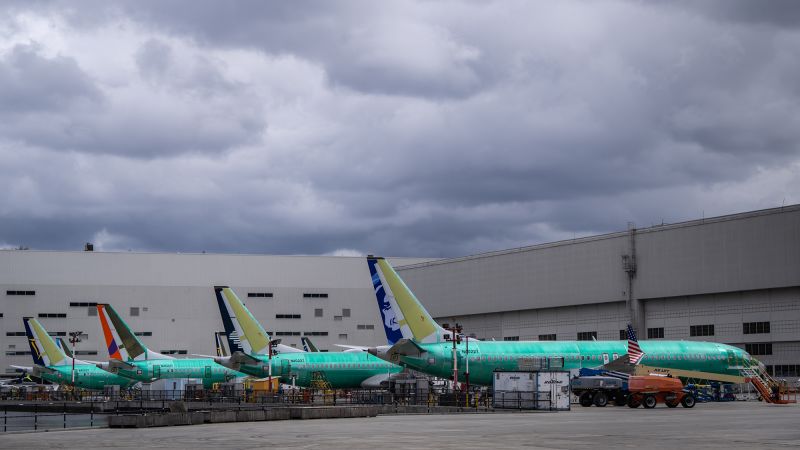Boeing reported a slightly smaller loss in the first quarter compared to the same time a year ago, and warned investors and employees it will have to cut back production further to deal with quality and safety issues on its production line.
Boeing reported a core operating loss of $388 million, or $1.13 a share, from the $440 million it lost on that basis a year earlier. That was significantly less than analysts’ forecast of $1.63 a share in the quarter. But the improvement came from outside its key commercial airplanes unit, where losses from operations nearly doubled to $1.1 billion.
Revenue tumbled $1.4 billion, or 8% to $16.6 billion, as the problems at the airplane maker resulted in a sharp drop in deliveries of jets to its airline customers. The company gets most of its money from sales of commercial planes only upon deliveries to customers.
And those deliveries are likely to be reduced going forward, as Boeing said it would produce fewer 737 Max jets than it originally planned for the rest of this year as it tries to fix problems on its assembly lines. Production of its larger 787 Dreamliner will also be limited by supplier issues, it said.
“We will take the time necessary to strengthen our quality and safety management systems, and this work will position us for a stronger and more stable future,” said CEO Dave Calhoun, who announced during the quarter his plans to leave his post by the end of the year.
The company said the results were hurt by the compensation to airline customers for the three-week grounding of the 737 Max 9 jets, following a January 5 incident in which a door plug blew off of an Alaska Airlines flight leaving a gaping hole in the side of the plane shortly after take-off.
Boeing did not disclose the amount of compensation to the airlines in its initial earnings report. Alaska Air and United Airlines, the two carriers with the most 737 Max 9 planes in their fleets, have already announced they had reached compensation agreements with Boeing.
Alaska said it received initial cash compensation of $162 million. United did not say how much it agreed to, but said that the grounding cost it about $200 million, and that its compensation would be in the form of credits on future purchases from Boeing.
The incident has sparked a series of investigations into Boeing by the National Transportation Safety Board, the Federal Aviation Administration and the Justice Department, the latter of which could expose the company to criminal liability. It also focused attention on the safety and quality of its aircraft, and its way of treating employees who raise concerns about those issues, including congressional hearings.
Boeing has said it has made a new commitment to improving its quality and safety issues and that it wants employees with concerns to bring them forward.
Shares of Boeing (BA), which had lost 35% so far this year through Tuesday’s close, were up more than 3% in pre-market trading on the smaller-than-forecast loss.
Boeing has had a string of losses and problems with its planes’ quality dating back at least five years. Two fatal crashes of the 737 Max in late 2018 and early 2019 that killed 346 people were tied to a design flaw in the plane and led to a 20-month grounding of Boeing’s best-selling model. It had subsequent problems with the quality of jets once the 737 Max was returned to service.
All told the company has reported core operating losses of $31.9 billion since the start of the grounding in 2019.
But it reported a record month for orders in December, capping what had been one of its best years ever in terms of commercial jet sales. Deliveries also reached a five-year high, and it even reported a rare core operating profit of $90 million for the fourth quarter of 2023. It also announced plans to increase production of the 737 Max throughout 2024 in order to return to sustained profitability.
But by the time it reported those better results for 2023, the incident aboard the Alaska Air flight had already occurred, dashing hopes that it was about to put its financial problems behind it.
While the NTSB has not determined who specifically is at fault for the accident, a preliminary investigation has found that the jet left a Boeing factory missing the four bolts needed to hold the door plug in place.
This is a developing story. It will be updated.
Read the full article here




